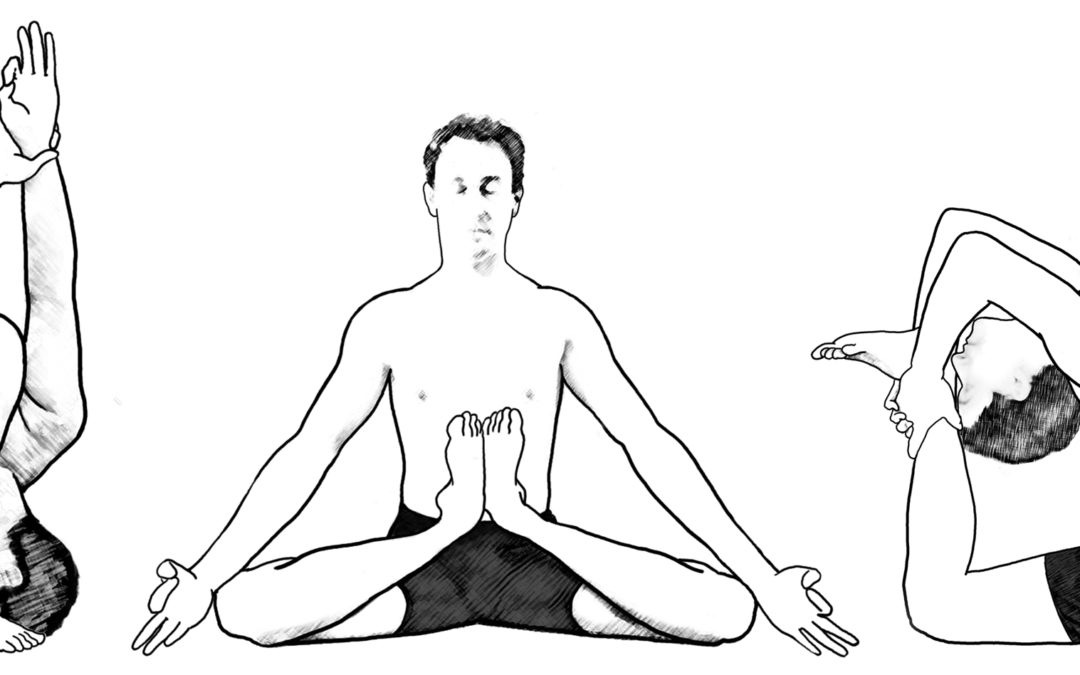
I’m a yoga teacher and I weight train. There. I said it. Now let me explain.
The fine teachers who mentored me early on often took a dim view of weight training (and most other forms of physical exercise). It was thought that resistance training was completely unnecessary if one practiced asana properly. It would “make you stiff” reducing hard won flexibility. The inference was that resistance training is undignified, rather coarse and unrefined.
As a student and emerging yoga teacher, I worked constantly on building my poses, achieving great range of motion, agility and strength. Many of my longstanding injuries and physical complaints began to evaporate. I was truly amazed.
As most of us know, not all bodies are the same. We all have unique advantages and disadvantages. I was determined to get past all of my perceived limitations and attain the perfection of poses I had witnessed in my teachers and in books. I came pretty close for a time. Then about twenty years into it, I began to develop nagging discomfort in my shoulder and my knee. I simply thought I had to work harder on my alignment or be more diligent about preparing better for deep poses. That did help but it also encouraged me to keep trying to go that much deeper or more extreme. By now I was a teacher with some recognition and felt I had to look the part. Yet the discomfort became more chronic and pronounced to the point where I was limping, and just raising my arm hurt. I had overstretched the ligaments of my knee (tibiofemoral joint) to the point where there was noticeable lateral movement and instability, and had chronic inflammation of the ligaments and tendons of the rotator cuff.
I decided to do two things; have a good long, honest look at what had motivated me to create this situation, and to start strengthening my joints which were clearly getting weaker not stronger. I went to the gym and began moderate resistance training. I secretly hoped I wouldn’t see anyone who might recognize me.
It wasn’t long before things began changing for the better. Working lightly at first and with proper form, both pain and stability improved. After a year of training twice a week things progressed even more. The surprising part was that my flexibility was not inhibited at all. I began to discover that I could work in deep poses with more control, greater joint integration and stability than ever before. I also came to admit that certain poses requiring tremendous range of motion in the joints just weren’t wise for my body. I am not telling you to not do certain poses. Just listen to the signals your body is giving you and be honest.
I am simplifying things in telling this story. And I will talk more in the future on joint stability, types of tissue and the effects of physical activity on them. I will get more specific on a range of topics. Suffice to say, that if you are under the impression that engaging in a variety of physical activities or sports is somehow treasonous to yoga practice, I encourage you to let that go. Yoga is ultimately not a thing you do. It is a state of being. The state of experiencing all of what we engage in, all of life as a sacred expression of the Divine in all it’s miriade forms. Our bodies are a divine gift and the joy of embodiment can and should be experienced in infinite ways with wisdom and reverence.
Enjoy, pay attention and be kind to yourself.


What a great share, Bruce! Thank you. I think it’s about time we yogis have this conversation about how to really take of ourselves and our bodies over the long-term. I too have experienced, and still experience issues in my own body and think it’s really important to move the body in different ways.
Hi Bruce,
I have experienced this same thing. My hip hurt for years. After a short 4 months of weight training I noticed a huge change. A year and a half into my weight training, I never even think about my hip! Thanks for sharing!
Lori
a wonderful reminder!
As always super honest and authentically written Bruce. Thank you for sharing your re-covery and new freedom in your mindset and joints. Love to your end.
Thanks for sharing your experience. Can you tell me a little more about the specific nature of your injuries and the kinds of resistance training you were doing? Things like exercises, pace, reps, sets. Thanks!